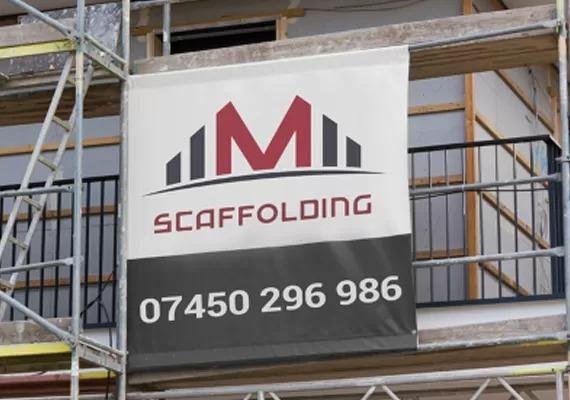The construction industry continues to evolve as builders, architects, and developers seek materials that balance strength, style, and sustainability. Known for their durability, lightweight composition, and versatility, these panels are transforming modern design and building practices. This blog explores why ACPs are increasingly regarded as the secret to creating long-lasting construction projects.
Understanding Aluminium Composite Boards
What are Aluminium Composite Boards?
An aluminium composite board is a sandwich panel comprising two thin aluminium sheets bonded to a non-aluminium core, often made from polyethylene or fire-retardant material. This combination results in a product that is lightweight yet exceptionally strong, offering impressive resistance to weathering, corrosion, and impact.
Evolution of ACP in Construction
Originally popular in the signage industry for their smooth surface and high-quality print compatibility, ACPs have now become indispensable in building design. Their transition from advertising materials to mainstream construction highlights their adaptability and unmatched benefits in both functional and decorative applications.
Why Aluminium Composite Boards Stand Out
Durability and Longevity
ACPs are designed to withstand harsh environmental conditions. They resist corrosion, rust, and UV rays, making them perfect for long-term exterior use. Unlike materials such as timber or low-quality plastics, they retain their appearance and structural integrity with minimal upkeep.
Versatility in Application
The boards can be used for external cladding, partitions, interior accents, roofing, or even temporary installations such as exhibition stands. Their flexibility allows architects to push design boundaries while ensuring practicality.
Aesthetic Appeal
With finishes available in metallic shades, wood textures, marble effects, and matte tones, ACPs provide creative freedom. They create sleek, modern exteriors or eye-catching interiors, adding visual appeal to otherwise plain structures.
Lightweight Yet Strong
Despite being lighter than many alternative materials, ACPs do not compromise on strength. This quality reduces transportation and installation challenges, making them a cost-effective choice for builders working on both small and large projects.
Benefits for Builders and Developers
Cost-Effectiveness
- The long lifespan of ACPs, combined with minimal maintenance requirements, significantly reduces repair costs and provides builders with excellent long-term value for money.
- Faster and simpler installation processes save labour expenses while accelerating overall project delivery, allowing construction teams to meet deadlines more efficiently.
Sustainability
- Recyclable materials used in ACPs support eco-friendly construction practices, reducing environmental impact while promoting responsible resource management in every project.
- Their energy-efficient performance ensures buildings consume less power, helping projects comply with modern green construction standards and contribute to long-term sustainability.
Fire and Safety Performance
- Special fire-retardant ACPs are manufactured to comply with strict safety regulations, offering builders peace of mind while ensuring projects meet required industry standards.
- Their advanced ability to endure extreme temperatures provides enhanced protection, maintaining safety and reliability without compromising the modern and stylish appearance.
Common Applications in Construction
Facade Cladding
They shield structures from wind, rain, and pollution while giving a polished, contemporary look.
Roofing and Ceilings
Lightweight yet sturdy boards are excellent for roofing and ceiling applications. Their adaptability allows creative geometric designs and innovative architectural features.
- Aluminium composite boards are ideal for roofing in commercial and residential buildings due to their light weight. They reduce structural load while still providing strength and weather resistance, making them a reliable alternative to heavier traditional materials.
- They create a sleek and modern finish, conceal wiring or ductwork, and improve acoustic performance while adding elegance to interiors.
- Available in multiple colours, textures, and finishes, ACPs allow designers to incorporate innovative patterns, geometric layouts, and stylish accents into ceilings, enhancing the overall appeal of indoor spaces.
Interior Design
From wall panels and decorative partitions to false ceilings, ACPs bring elegance and durability indoors. Their smooth finish and colour options make them ideal for commercial and residential interiors alike.
Temporary and Commercial Use
ACPs remain a popular choice for exhibitions, retail displays, and construction hoardings. Their resilience ensures they can be reused for multiple projects, offering strong value for money.
- ACPs are frequently used for durable construction hoardings that secure sites, display branding, and withstand outdoor conditions. Their reusability makes them a cost-effective solution for multiple projects.
- Their lightweight nature and smooth surface make aluminium composite boards perfect for exhibitions, trade shows, and promotional events. They can be printed with high-quality graphics, ensuring a professional look while being easy to transport and install.
- In commercial spaces, ACPs serve as eye-catching display units, shopfront signage, and promotional boards. Their durability ensures they retain their appearance even in high-traffic environments, providing businesses with long-lasting visibility.
Comparing ACP with Other Materials
ACP vs. Timber
Timber may provide warmth and natural aesthetics but requires constant maintenance to resist rot, pests, and weathering.
ACP vs. PVC Panels
While PVC panels are affordable and water-resistant, they lack the premium look and longevity of ACP. ACP provides better colour stability, structural strength, and versatility.
ACP vs. Solid Aluminium Sheets
ACP achieves a balance by offering strength at a fraction of the weight and cost, making them a practical choice for modern builders.
Key Considerations Before Using ACP
Choosing the Right Thickness and Grade
Different grades suit different applications.
Installation Practices
Professional fitting is crucial for ACP performance. Skilled installers ensure proper alignment, weatherproofing, and safety compliance. Poor installation can compromise the benefits of the material.
Maintenance Tips
Though low maintenance, ACPs should be occasionally cleaned with mild detergent and water to maintain their shine. For applications such as hoardings, this simple practice ensures they continue to look professional.
Future of Aluminium Composite Boards in Construction
Innovation in Design and Technology
Technological advancements are enhancing ACP functionality. Self-cleaning coatings, digital printing options, and solar-reflective surfaces are expanding their appeal across industries.
Growing Popularity in Sustainable Construction
Their recyclability and energy-efficient properties align with global green building trends.
Conclusion
Aluminium composite boards represent a blend of strength, style, and sustainability that today’s construction industry demands. Their lightweight structure, durability, and cost-efficiency make them a trusted choice for builders and developers. From facades and interiors to roofing and hoardings, ACPs adapt to a wide range of applications while maintaining their professional appearance. At Hoarding Printing Company, we recognise the value of fusing design, quality, and longevity. Our expertise ensures that every aluminium composite board application, whether for construction projects or promotional hoardings, is tailored to meet your exact requirements.



